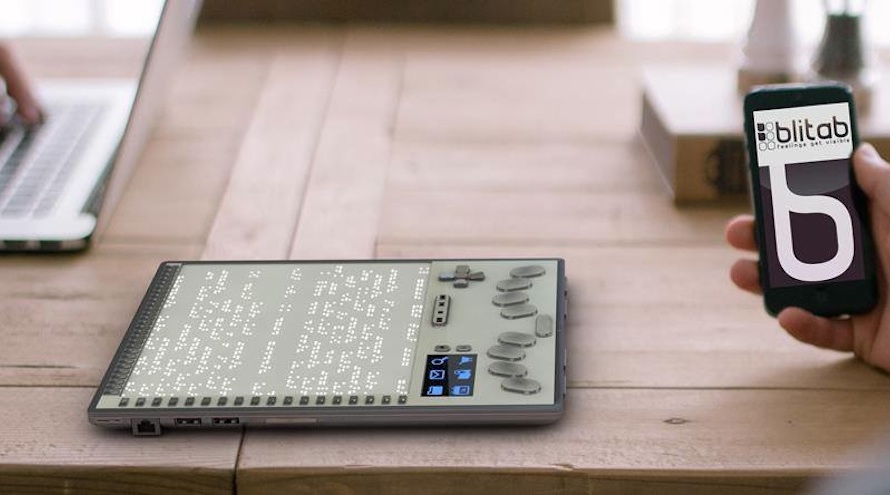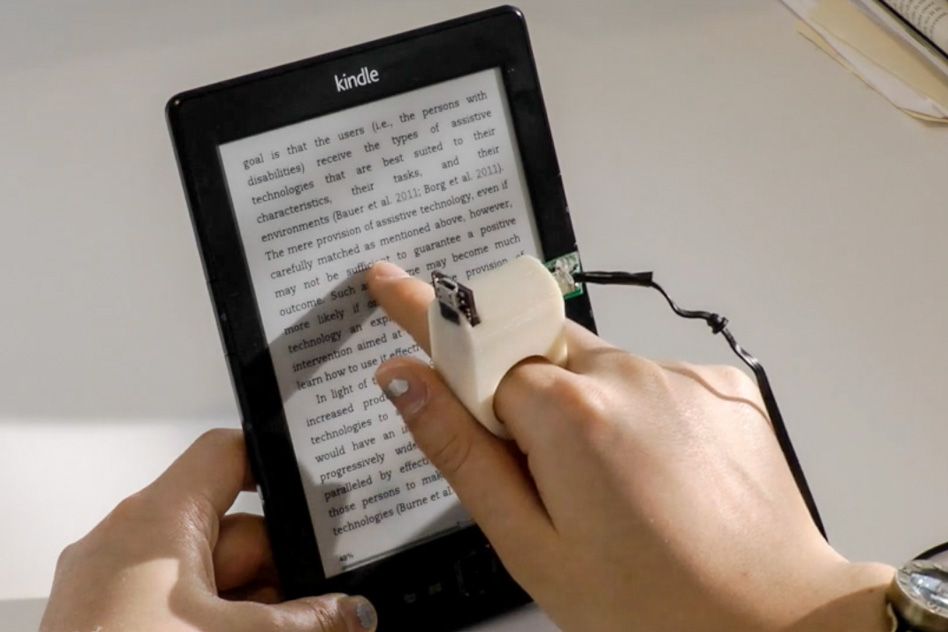Enhancing Lives With Advanced Assistive Devices for the Blind
The combination of sophisticated assistive gadgets for the blind is changing just how people experience their environments and communicate with their areas. Developments such as increased truth clever glasses and advanced electronic travel help not just assist in navigation yet additionally improve general high quality of life. These technologies promote a feeling of autonomy and self-efficacy among users, allowing them to undertake daily jobs with newly found confidence. The ramifications of these innovations expand past plain functionality; they challenge societal understandings of handicap and freedom. What does this evolution indicate for the future of assistive innovation and its function in equipping people?
Review of Assistive Tools
Assistive devices for the blind incorporate a diverse array of devices and modern technologies developed to enhance freedom and enhance the lifestyle for people with visual impairments. These tools accommodate different needs, from navigating and flexibility to communication and daily task administration.
Among the primary groups of assistive gadgets includes movement aids, such as white walking sticks and guide pet dogs, which aid customers browse their environments safely. Electronic traveling help, furnished with sensing units and audio feedback, also play a considerable role in wheelchair enhancement.
Furthermore, devices that help with everyday living tasks, such as flexible kitchen area devices, Braille labels, and speaking watches, empower people to execute jobs independently. Interaction aids, consisting of display viewers and Braille screens, help with access to information and make it possible for individuals to engage properly with the digital globe.
Moreover, low-tech solutions like amplifying glasses and large-print materials remain crucial for lots of individuals. Collectively, these assistive tools serve not just as practical tools however likewise as important enablers of autonomy, cultivating greater participation in a world that often prioritizes sighted experiences. Their integration into daily life is vital for advertising inclusivity and boosting general health for those with visual impairments.
Cutting-edge Technologies being used
Advancement in innovation has considerably transformed the landscape of tools readily available for individuals with aesthetic problems. Among the most noteworthy developments are smart glasses integrated with increased reality, which provide real-time navigation support and object recognition. These devices leverage progressed cams and man-made knowledge to provide auditory hints, enhancing the user's spatial awareness and autonomy.
Furthermore, mobile applications have become powerful resources, making it possible for customers to determine currency, read message out loud, and navigate unknown settings via verbal directions. Tools such as Braille display screens and refreshable Braille devices proceed to evolve, using smooth connection with computers and smart devices, therefore improving interaction and accessibility to info.
Wearable innovation, consisting of smartwatches equipped with voice-activated functions, additionally empowers customers by promoting quick access to alerts and alerts without calling for visual involvement. Responsive maps and 3D printing are additionally gaining traction, offering substantial representations of spaces that help in positioning and wheelchair training.
Jointly, these ingenious technologies not only improve the day-to-days live of visually damaged individuals but also foster higher independence, inclusivity, and involvement with the more comprehensive area, consequently reshaping understandings of accessibility. (Wearable technology for low vision)
Personal Stories of Empowerment
Empowerment usually arises from individual experiences that highlight the transformative influence of technology on people with visual disabilities. Take, for circumstances, the tale of Sarah, a young musician who restored her enthusiasm for painting with making use of a wise redirected here walking cane equipped with challenge detection. This tool not only facilitated her movement yet instilled a newfound self-confidence, allowing her to navigate public spaces individually and pursue her innovative endeavors.

These narratives highlight the profound effects that progressed assistive tools can have on day-to-day live. By enabling people to get over barriers, modern technology cultivates a feeling of autonomy and self-regard. Such empowerment stories work as a testament to the capacity of innovation, showing how the right tools can considerably enhance quality of life and open doors to new possibilities for those with visual disabilities.
Benefits of Advanced Solutions
The assimilation of innovative technology into assistive tools dramatically transforms everyday experiences for those affected by vision loss. Wearable technology for low vision. Instruments such as wise walking canes outfitted with sensing units, navigation applications, and wearable innovation are designed to give real-time comments, improving spatial awareness and lowering the dangers associated with wheelchair.
In addition, advanced assistive innovations promote social inclusion by facilitating interaction and interaction. Voice-activated devices and applications allow people to access information and involve with their surroundings separately, breaking obstacles that previously hindered their engagement in instructional, professional, and social setups.
On top of that, the personalization and versatility of these remedies accommodate the varied needs of users, thereby improving their overall quality of life. Improved performance, such as object recognition and text-to-speech capacities, equips individuals with aesthetic disabilities to execute jobs that they might have when found challenging. Inevitably, advanced assistive innovations not only enhance self-reliance and security however likewise promote self-respect and self-worth, permitting individuals to lead fulfilling lives.
Future Fads in Assistive Technology
As innovation continues to develop, the landscape of this link assistive devices for the blind is poised for exceptional developments that will certainly additionally boost accessibility and independence. Emerging trends in assistive modern technology suggest a change toward boosted integration of man-made intelligence (AI) and equipment understanding, allowing tools to adapt to private customer needs in real-time. These developments are anticipated to promote even more instinctive navigation systems that can identify barriers and offer audio feedback, dramatically boosting exterior flexibility.
Furthermore, the growth of wearable tech, such as clever glasses outfitted with increased fact, will allow users to receive contextual info concerning their environments, thereby enhancing their spatial recognition. Furthermore, improvements in haptic innovation guarantee to produce responsive feedback devices, enabling individuals to view information via touch, boosting knowing and interaction with their setting.
Telecommunication breakthroughs are additionally paving the way for remote help solutions, where skilled experts can offer assistance using video clip phone calls, making sure assistance is easily obtainable. As these patterns unfold, the future of assistive gadgets for the blind will undoubtedly promote better autonomy, encouraging individuals to navigate their globe with confidence and simplicity.

Conclusion
The combination of advanced assistive tools for the blind represents a significant advancement in fostering self-reliance and enhancing lifestyle. By making use of innovative modern technologies, these tools empower users to navigate their settings with greater confidence and autonomy. As the area remains to advance, ongoing research and development will likely produce much more sophisticated options, additionally changing the lived experiences of people with aesthetic problems and promoting a greater feeling of addition within culture.
The combination of sophisticated assistive gadgets for the blind is changing just how people experience their surroundings and communicate with their neighborhoods. The combination of sophisticated technology into assistive gadgets substantially changes daily experiences for those impacted by vision loss.As modern technology proceeds to progress, the landscape of assistive gadgets for the blind is poised for impressive improvements that will even more enhance availability and self-reliance. Emerging fads in assistive innovation show a shift toward enhanced combination of artificial knowledge (AI) and device knowing, allowing devices to adjust to specific customer requires in real-time.The assimilation of advanced assistive tools for the blind stands for a significant innovation in promoting independence and boosting high quality of life.